With a heavy heart and, in Debbie’s case, tears in her eyes we depart South America after nearly 6 months of travelling around fulfilling dreams of exploring the huge continent. We have been really lucky to have enjoyed experiences, people and unique cultures giving us a good understanding of the countries within.
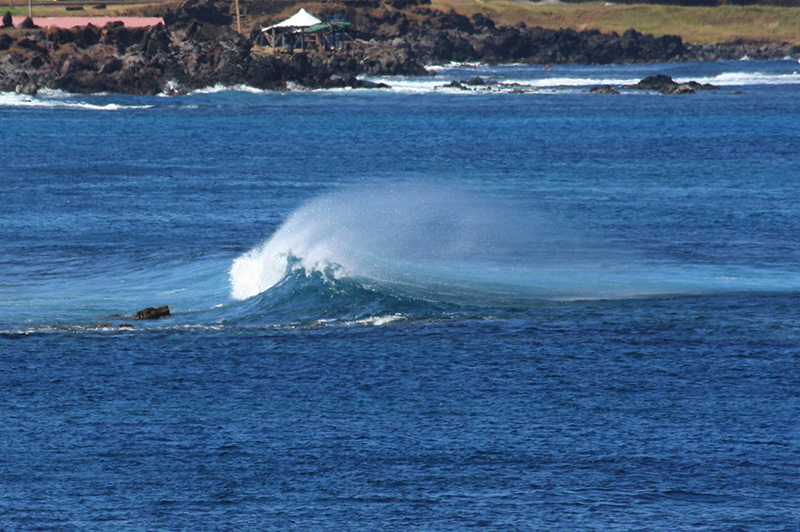 So with a hop, skip and a jump we start to cross the Pacific Ocean on our way to New Zealand. For our first stop we arrive in Easter Island (Isla de Pascua in Spanish) or Rapa Nui as the locals call it. The locals also say that it is the most remote island in the world being 3,700km from mainland Chile, 4,500km from Tahiti and 2,500km from Pitcairn (where Fletcher Christian and the other HMS Bounty mutineers finally settled). It certainly has a remote feel about it as we stand on top of one of the extinct volcanoes and take in the uninterrupted views of the Pacific Ocean, I feel sure that we can see the curvature of the earth.
So with a hop, skip and a jump we start to cross the Pacific Ocean on our way to New Zealand. For our first stop we arrive in Easter Island (Isla de Pascua in Spanish) or Rapa Nui as the locals call it. The locals also say that it is the most remote island in the world being 3,700km from mainland Chile, 4,500km from Tahiti and 2,500km from Pitcairn (where Fletcher Christian and the other HMS Bounty mutineers finally settled). It certainly has a remote feel about it as we stand on top of one of the extinct volcanoes and take in the uninterrupted views of the Pacific Ocean, I feel sure that we can see the curvature of the earth.
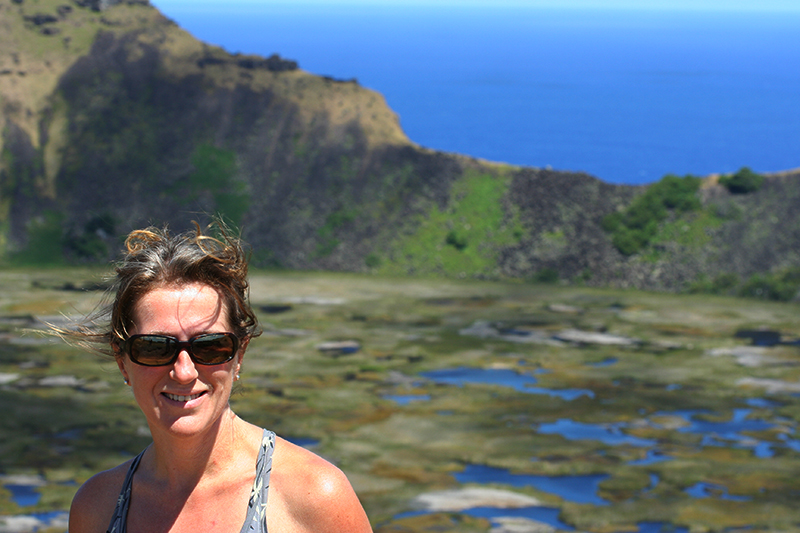 It’s a volcanic island that emerged from the sea ‘only’ 18 million years ago, the top of Volcan Terevaka clearing the water by some 500 metres. It’s 24km long and 12 km at the widest point, has no coral reef and the pacific rollers smash into the cliffs around the island. It would be ideal for surfing if only there were more than three tiny beaches on which to collapse. On the other hand, the coastline is stunning: sheer rock rises out of the water giving a rugged, natural beauty to the land.
It’s a volcanic island that emerged from the sea ‘only’ 18 million years ago, the top of Volcan Terevaka clearing the water by some 500 metres. It’s 24km long and 12 km at the widest point, has no coral reef and the pacific rollers smash into the cliffs around the island. It would be ideal for surfing if only there were more than three tiny beaches on which to collapse. On the other hand, the coastline is stunning: sheer rock rises out of the water giving a rugged, natural beauty to the land.
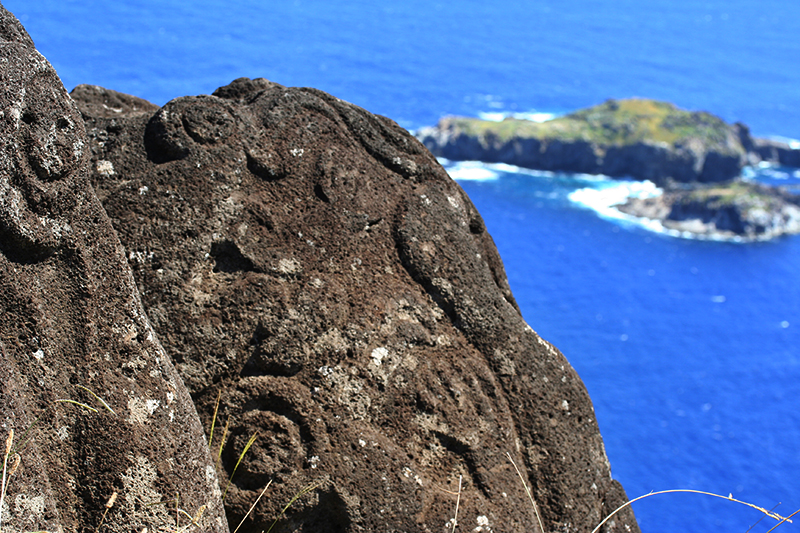 It’s also an island full of legend. It is claimed that the first inhabitants arrived from the Marquesa Islands which were sinking and led by King Hotu Matu’a around 450 AD but the earliest archaeological evidence of people dates from 800 AD. Nobody really knows for sure where they came from but the indigenous inhabitants share several cultural traits with other Polynesian people and none with those of mainland South America. It is also claimed that the Maori people of New Zealand were originally from Easter Island and there is some cultural and social evidence to support the theory.
It’s also an island full of legend. It is claimed that the first inhabitants arrived from the Marquesa Islands which were sinking and led by King Hotu Matu’a around 450 AD but the earliest archaeological evidence of people dates from 800 AD. Nobody really knows for sure where they came from but the indigenous inhabitants share several cultural traits with other Polynesian people and none with those of mainland South America. It is also claimed that the Maori people of New Zealand were originally from Easter Island and there is some cultural and social evidence to support the theory.
The new inhabitants flourished on the island and their numbers grew, slowly at first and then rapidly until the population reached 20,000 and threatened the available resources whereupon clan warfare broke out. They had managed to consume almost every piece of wood on the island so that today the only trees left standing are Eucalyptus that have been introduced in the last 100 years.
The first European to visit was a Dutchman, Admiral Jacob Roggeveen, who arrived on Easter Sunday 1722 (hence Easter Island). Captain Cook also spent some time here providing some written evidence of the original positions of some of the famous stone carved statues that litter the island. Unfortunately for the locals the steady trickle of Europeans alerted the outside world to their existence and their own civil wars became nothing compared to the near annihilation wreaked by outsiders.
The worst example occurred in 1862 when Peruvian slavers raided Rapa Nui and took nearly all the men, including the king, to work on the guano deposits on Peru’s Chincha Islands. After Bishop Jaussen of Tahiti protested to Lima, the Peruvian authorities ordered the return of the Islanders, but disease and hard labour had already killed 90% of them. On the return voyage, smallpox killed most of the rest; the handful who survived brought back an epidemic that decimated the remaining inhabitants of the Island, leaving on a few hundred traumatized survivors. The knowledge and culture lost has never been regained.
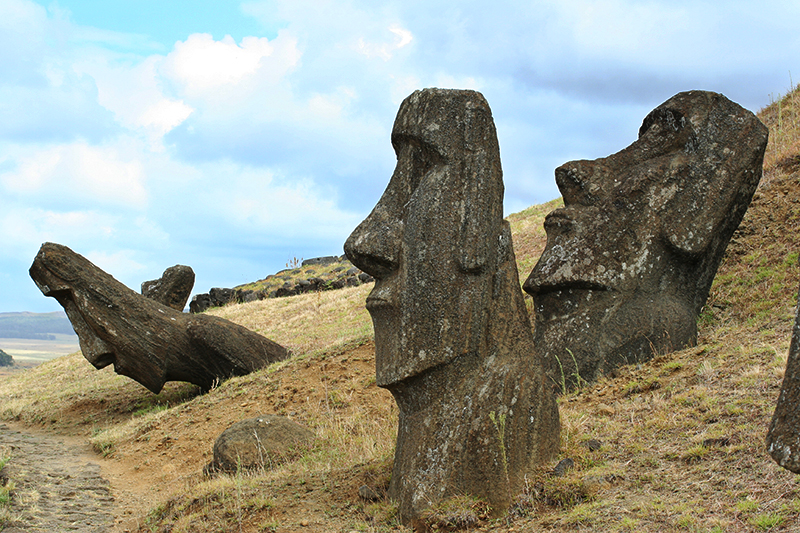 As a visitor, it is the number of statues, standing or not, all around the coast that is the most striking feature. Called Moai and usually around 6 metres in height, they represent the torso of a dead king and are erected on Ahu, a burial site where the bodies of the king and other members of his clan are entombed. They are carved from volcanic rock (the compressed ash and stone variety) in a quarry near the centre of the island and then transported to their final positions on the coast. Weighing up to 110 tons, it must have been some undertaking to move them and no one is sure exactly how they hauled the finished statues as far as they did. Once erected, the Moai statues faced inland so that their power watched over and protected their descendents.
As a visitor, it is the number of statues, standing or not, all around the coast that is the most striking feature. Called Moai and usually around 6 metres in height, they represent the torso of a dead king and are erected on Ahu, a burial site where the bodies of the king and other members of his clan are entombed. They are carved from volcanic rock (the compressed ash and stone variety) in a quarry near the centre of the island and then transported to their final positions on the coast. Weighing up to 110 tons, it must have been some undertaking to move them and no one is sure exactly how they hauled the finished statues as far as they did. Once erected, the Moai statues faced inland so that their power watched over and protected their descendents. 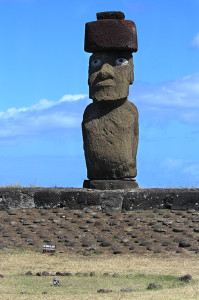 In later years, from 1500 onwards, many statues had a topknot added: made from red volcanic stone, they represented the hair of the dead king tied up above the head and added another 10 tons to the weight of the statue.
In later years, from 1500 onwards, many statues had a topknot added: made from red volcanic stone, they represented the hair of the dead king tied up above the head and added another 10 tons to the weight of the statue.
During the internal warfare, all the Moai statues were toppled and those that are standing today have all been renovated and repositioned. The clan warfare was a thoroughly nasty period in which nothing and no one was spared. The bodies of the dead were cut up and eaten, lands and shelters destroyed.
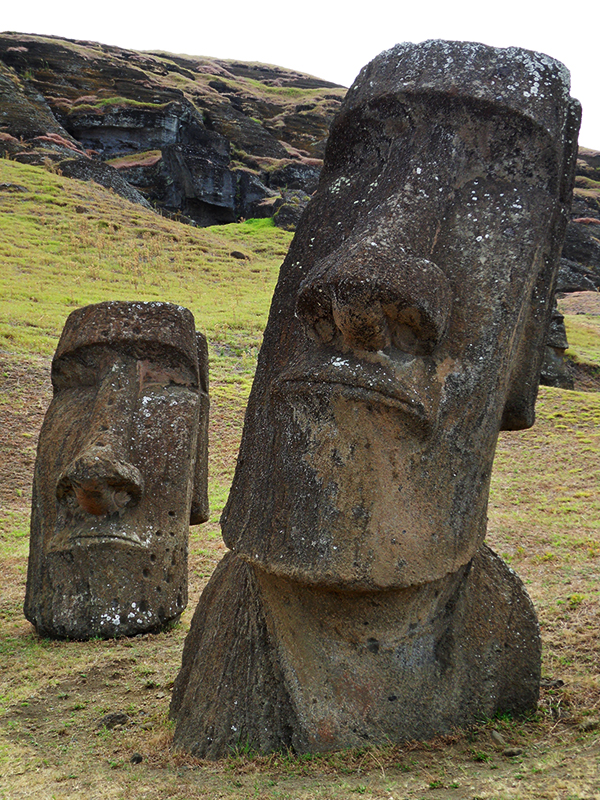 As we wandered around the island, it was impossible not to trip over parts of these statues as they litter the ground all around the coast. They depict people with oddly shaped, elongated heads with heavy brows and prominent noses, small mouths with thin lips, angular chins and stretched earlobes. It is no surprise, therefore, that the usual suspects came up with the alien landings theory to explain these unusual shaped heads but, I am sure, it is simply the result of a good many years of interbreeding. Incest: keep it in the family!
As we wandered around the island, it was impossible not to trip over parts of these statues as they litter the ground all around the coast. They depict people with oddly shaped, elongated heads with heavy brows and prominent noses, small mouths with thin lips, angular chins and stretched earlobes. It is no surprise, therefore, that the usual suspects came up with the alien landings theory to explain these unusual shaped heads but, I am sure, it is simply the result of a good many years of interbreeding. Incest: keep it in the family!
Being a remote lot, the Rapa Nui invented some strange customs all of their own. One evolved the cult of the Birdman. Every year one representative from each tribe would swim out to an offshore rock stack where the sooty terns nested. It involved negotiating the rough, shark-infested seas on a raft made from reeds, scrambling up the stack and waiting for the first tern’s egg of the year to pop out. They then had to grab the egg in one hand, place the nest on their heads and shout back to the mainland that they were the winner. The clan chief was then acknowledged as a deity for the next twelve months and was sent to live in the dark alone with only a holy man as company. It was supposed to celebrate the start of a new cycle of life and the clan chief was supposed to be visited by special powers. Quite how he managed to make use of this wonderful power living as a recluse is unexplained, as is how he managed to live without the normal human ‘comforts’ for such a long period. I would have been perfectly happy to come second every year and I certainly would not have wanted to be the first tern to produce an egg. There is also no evidence of cheating (or gamesmanship as we competitive souls like to call it) during the competition. If it was such an honour, how did they prevent some old lag from taking an egg from the previous year with him out to the stack and claiming to be the winner? It certainly beats sitting on a rock for several days without food or water waiting for some stupid bird to lay.
Another unusual habit occurs during the festival of Tapati Rapa Nui that takes place in the first two weeks of February at the same time as carnival on the mainland. The highlight is the spectacle of Haka Pei that happens on the grassy banks of Cerro Pui, an extinct volcano in the centre of the island. Male contestants wearing nothing but body paint and ‘sexy’ breechcloth, slide downhill on a sled made from banana leaf at speeds that can reach 70kmh (45 mph). The winner is the fastest and it is supposed to prove manhood, but if they end up mangled with broken limbs and head, they do not get much chance to use it.
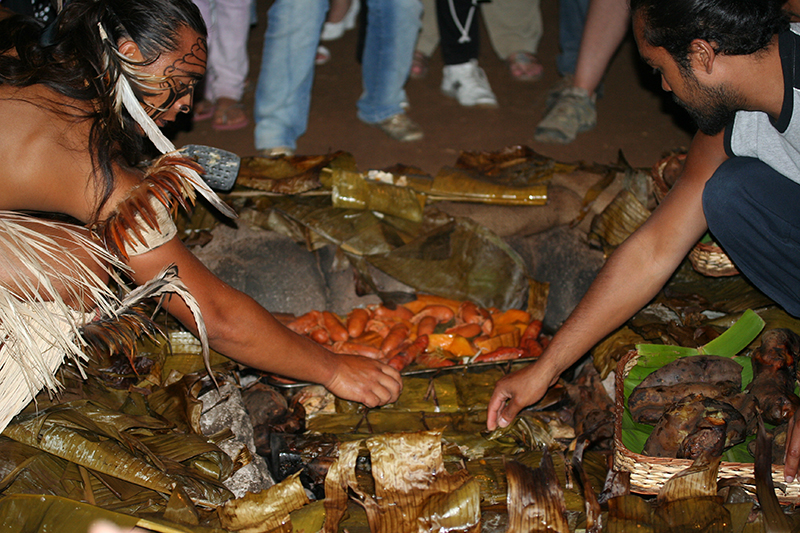 We also went to a couple of ‘cultural shows’ one of which involved eating food cooked in the ground using the traditional method of heating volcanic stones and placing them into a pre-dug pit. The food is then layered using banana leaf, the slowest cooking food being placed at the bottom next to the stones. Everything is then covered in earth and left to cook for three or four hours. The result is food that falls of the bone but is still succulent and very tasty.
We also went to a couple of ‘cultural shows’ one of which involved eating food cooked in the ground using the traditional method of heating volcanic stones and placing them into a pre-dug pit. The food is then layered using banana leaf, the slowest cooking food being placed at the bottom next to the stones. Everything is then covered in earth and left to cook for three or four hours. The result is food that falls of the bone but is still succulent and very tasty.
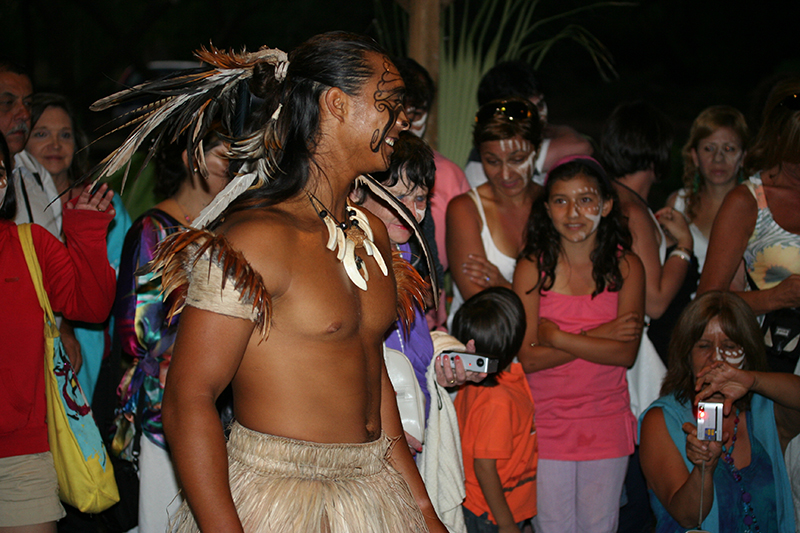 The shows certainly grab the girls’ attention. Chaps with toned torsos, rippling muscles and buttocks like hard boiled eggs, dress up in a sort of feathery posing pouch and cover their body in paint, then leap about and shout a lot. Regrettably, the girls are not similarly adorned, wearing knee length grass skirts and covering their breasts with coconuts. Here is the question: how do the girls find the right sized coconut to fit their cup size? Are there coconut fitters where the staff look at the girls and say ‘you’ve been wearing the wrong sized nuts all your life’? And are the largest coconuts the most expensive (some sort of outsize arrangement)? I wanted to ask the dancers, purely in the interests of research you understand, but Debbie would not let me. It will remain another mystery that shrouds the island.
The shows certainly grab the girls’ attention. Chaps with toned torsos, rippling muscles and buttocks like hard boiled eggs, dress up in a sort of feathery posing pouch and cover their body in paint, then leap about and shout a lot. Regrettably, the girls are not similarly adorned, wearing knee length grass skirts and covering their breasts with coconuts. Here is the question: how do the girls find the right sized coconut to fit their cup size? Are there coconut fitters where the staff look at the girls and say ‘you’ve been wearing the wrong sized nuts all your life’? And are the largest coconuts the most expensive (some sort of outsize arrangement)? I wanted to ask the dancers, purely in the interests of research you understand, but Debbie would not let me. It will remain another mystery that shrouds the island.
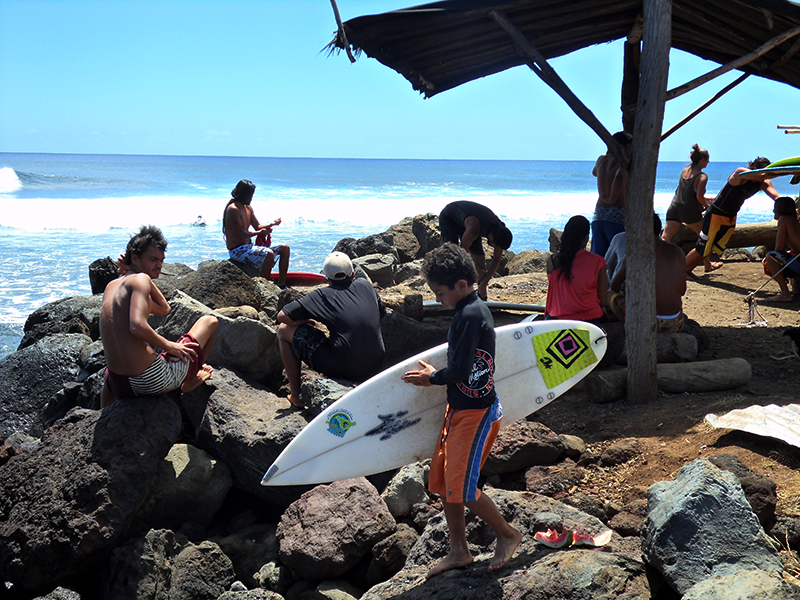 There are a couple of other key observations to the island regarding surfing and horses. If you are not involved in tourism directly or indirectly you will find a Rapa Nui on a surfboard or a horse. Surfboards are easy to manage and control, if you know what you are doing. Unfortunately the Europeans introduced the horse to Rapa Nui and they are now everywhere and becoming a problem. There is not really enough food or water for all the wild horses so that many of them look desperately thin and undernourished. The locals, however, often ride their nags two up, bare back and it is perfectly normal to see them tied up outside a supermarket or, more likely, outside a bar. If the horse gets home without its rider, then he’s most likely face down in the road somewhere. How he got there, he will tell his wife, will remain one of the island’s mysteries.
There are a couple of other key observations to the island regarding surfing and horses. If you are not involved in tourism directly or indirectly you will find a Rapa Nui on a surfboard or a horse. Surfboards are easy to manage and control, if you know what you are doing. Unfortunately the Europeans introduced the horse to Rapa Nui and they are now everywhere and becoming a problem. There is not really enough food or water for all the wild horses so that many of them look desperately thin and undernourished. The locals, however, often ride their nags two up, bare back and it is perfectly normal to see them tied up outside a supermarket or, more likely, outside a bar. If the horse gets home without its rider, then he’s most likely face down in the road somewhere. How he got there, he will tell his wife, will remain one of the island’s mysteries.

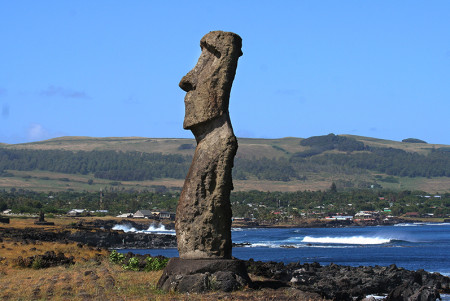
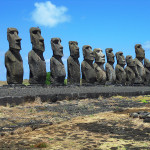
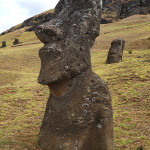
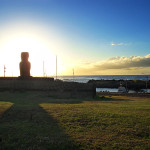
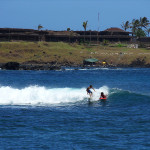
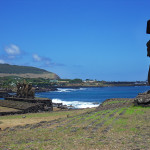
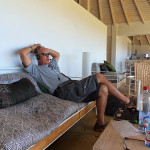
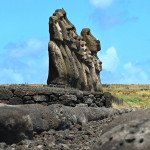
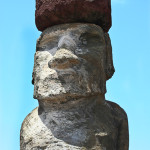
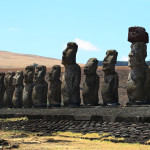
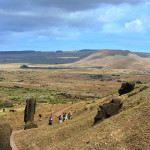
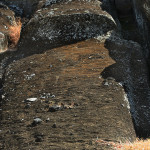
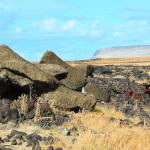
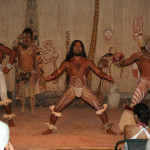
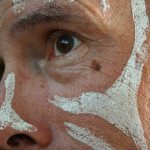
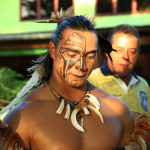
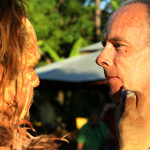
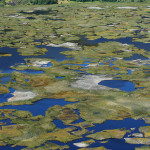
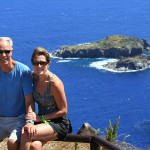
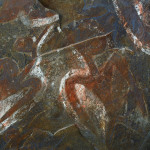
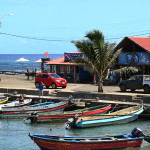
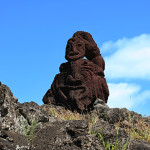
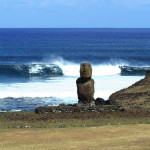
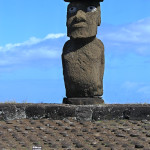
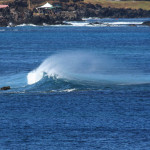
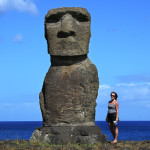
No comments yet.